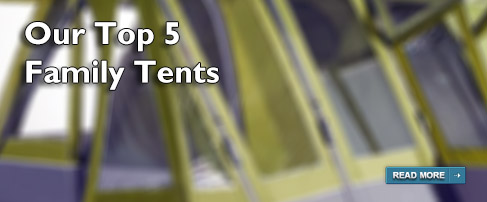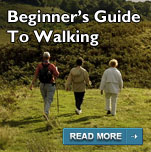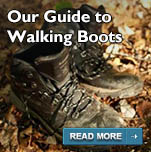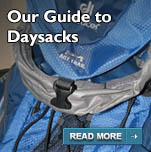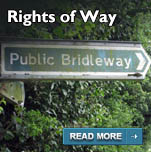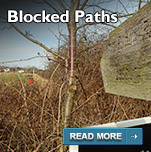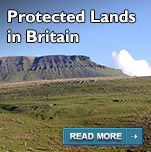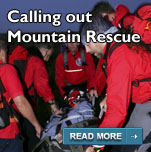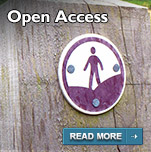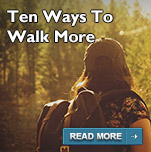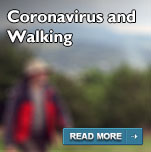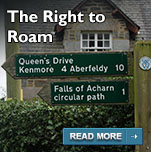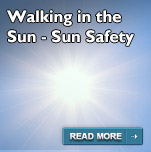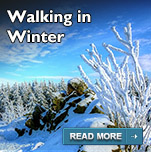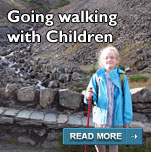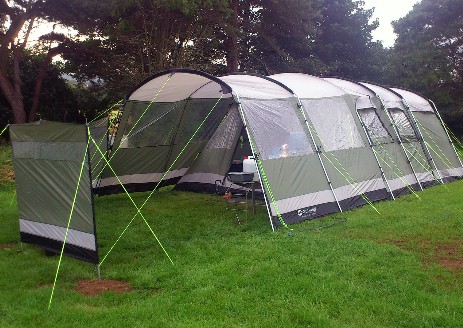
Our Beginners' Guide to Camping
There are few activities as closely linked as Walking and Camping; they go together like strawberries and cream. There's nothing better than waking up to the sounds of birds, enjoying a nice outdoor breakfast and then going out for a lovely walk.
And camping is more popular than ever - with more and more people choosing a 'staycation' holiday here in the UK.
So, if you are new to camping, our guide here will give you all the information you need to get the right camping gear and enjoy holidays in the great outdoors with friends and family for years to come.
What are the different types of camping?
Just like walking, there are different types of camping, and before you buy anything, it's a good idea to think about what kind of camping you'll want to be doing.
For example:
- will you - or any of your potential camping party - be able to do without electricity?
- will you want to carry your tent across muddy fields and be pitching on the hill?
- will you want to have a few home comforts?
This should give you a better idea as to what type of camping you'll be doing.. and below is a brief overview of the most popular types of camping in Britain...
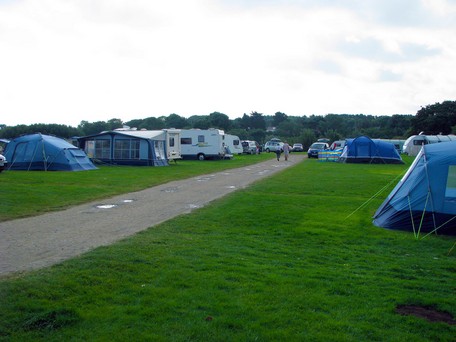
Full-featured Campsite Camping
By far the most popular type of camping. Here, you have a defined pitch on a campsite for a period of time, and you are usually able to park your car beside your tent. Full-featured campsites will have a range of on-site facilities such as toilets, shower blocks and usually a grocery shop too. The more family-friendly sites will have a playground and other entertainments to keep children busy.
Most full-featured campsites will have a proportion of pitchs with electric hook-up - so providing you have a suitable unit, you can have two or three electric sockets in your tent, which is useful for lighting and charging devices. With electric hook-up pitches, it's certainly advisible to book ahead rather than just chancing on getting one.
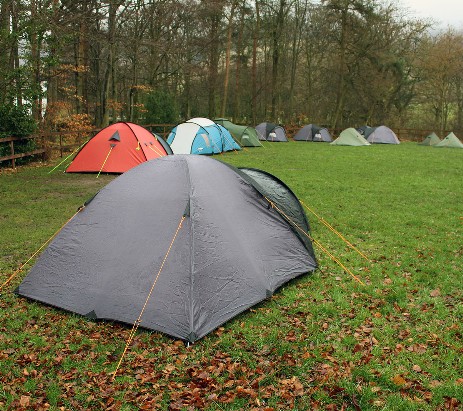
Standard Campsite Camping
A standard campsite will still be one where you pay for a period of time on the site, but unlike full-featured camping, you may not have a defined pitch - so finding a space might be more of a free-for-all. Standard campsites will almost certainly have toilets and washing facilities - but these won't be as comfort-ladened as a full-featured site, of course. Occasionally these sites may have a shop, but it will usually only stock the most essential of items.
These are the sites you are most likely to find in more remote areas - which also happen to be perfect for walking... so that's the upside to the fact most of them don't have electric hook-up.
They are also the sites you are most likely to be able just to turn up at... although the popular ones may well be full at busy times.
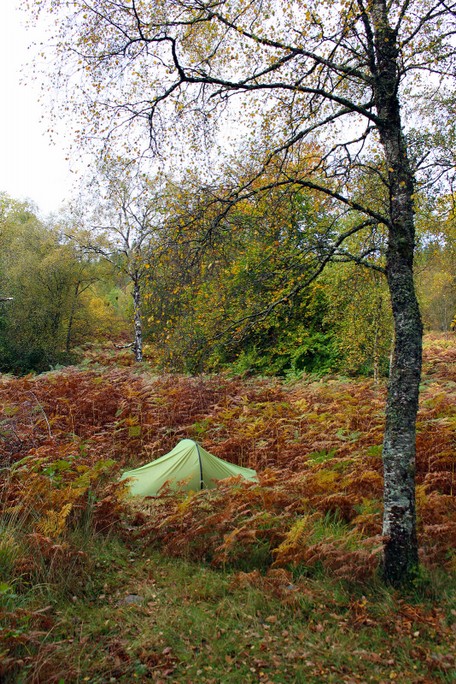
Wild Camping
This is where you leave the campsite behind and head off into the countryside, carrying everything you need - including the tent - in a backpack, and pitching your tent on any ground you like. Wild camping is often linked to long-distance walking - where aficionados will walk all day, and then wild camp wherever they can en route. In the world of wild camping, weight matters - the lighter the better - so tents, stoves, sleeping bags are all the lightest they could possibly be.
Before we go any further however, we should point out wild camping is only legal in Scotland (thanks to the Right to Roam) and in certain parts of the Dartmoor National Park.
Wild camping is illegal anywhere else without the permission of the land owner.
In practice, there are many people on social media who publicise their wild camping exploits and no action is taken against them because they are sensible and follow common sense of...
- keeping out of sight
- only staying in one place for one night and
- leaving no trace of their stay afterwards.
Some people enjoy wild camping without the backpacking aspect, and drive to a field to pitch up. That way, the kit you need is less expensive and specialised than full-on wild camping.
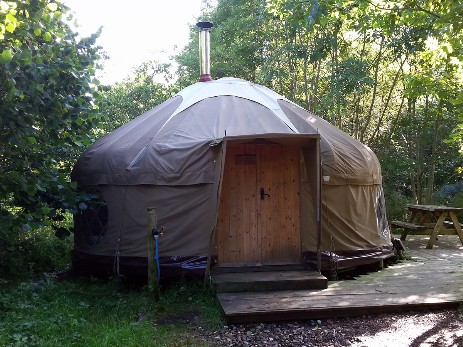
Glamping
Glamping is about as far removed from wild camping as you could get. This is the luxurious side of camping and usually involves booking into a pre-pitched Yurt or Teepee - some of which resemble small houses, rather than tents.
They are usually open plan, with a large double bed in the centre - and fold out beds around the edges. Many have a log burner or similar to keep the place warm - and although the site will have a range of facilities, they may be a fair walk away.
Glamping is a good idea if you don't fancy roughing it and would rather like a bit more luxury on your holidays.
What type of tent will I need?
When you've worked out what type of camping you will be doing, it's easier to decide on what type of tent you need.
- For wild camping - where weight is at a premium - you'll need one of the specially-designed wild camping tents.
- For full-featured campsite camping, you'll need either a Family tent or a Smaller tent - depending on whether you are intending on staying around the campsite a lot (go for a Family tent) or just using it as a base (go for a Smaller tent).
- For Standard campsite camping, you'll need a Smaller tent - as you'll probably just be using the campsite as a base. Family tents are uncommon on Standard campsites - but not unheard of.
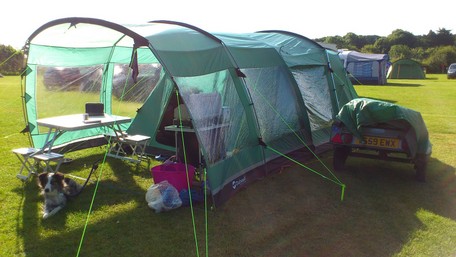
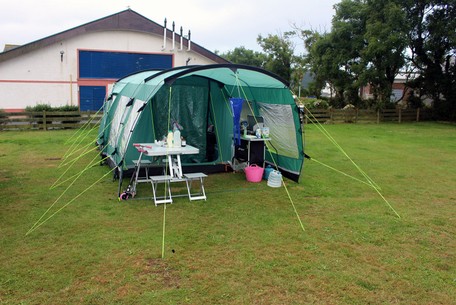
Family Tents
Again, by far the most popular type of tents. The term "family" is used here to describe a large tent designed for four or more people, with separate living area and bedroom areas.
Family tents are designed for an adult to be able to stand up in them - although in some designs that might only be comfortable right in the middle of the tent.
Usually, family tents are one of the following designs...
- Dome - a popular design with curved poles which cross in the middle of the ceiling to make an igloo shape
- Tunnel - another classic design, which uses hooped poles in a parallel formation to make a spacous inside
- Geodesic - a tough design based on the Dome, but with poles which cross usually at the sides of the tent, not above it.
- Vis-à-vis - a variation of either tunnel or dome tents, where the bedrooms are on facing each other across a central living area part of the tent which has the headroom.
Tent experts will say one is better than the other, but basically go to an outdoor store and choose the design which suits your requirements and your preferences.
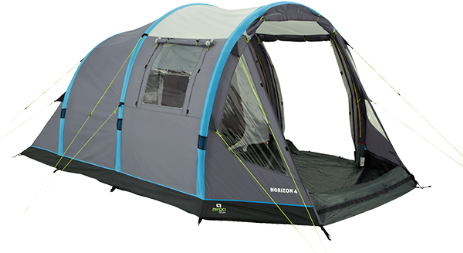
Inflatable Family Tents
A relatively recent development is the inflatable tent - which uses beams pumped with air to provide the rigidity instead of the traditional poles.
The benefit of inflatable tents is they take far less time to pitch. A six person traditional poled tent could take a minumal of around 30 minutes, whereas a six person inflatable tent could be pitched in around 10 minutes.
The down side is they are still more expensive than traditional poled tents, and tend to be a fair amount heavier to carry when packed up.
Our Top 5 Family Tents list has our selection of the
best Family Tents available at the moment
- including some real bargains...
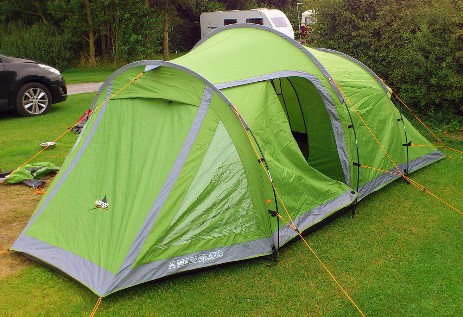
Smaller Tents
If you aren't intending on staying around the campsite long after you've woken up, then the Smaller Tent class might well be the best for you. Here, there will usually be a bedroom and a separate area best described as a porch. - which is perfect for keep your kit dry and undercover. These tents usually are for a maximum of three people - although larger ones are available - and aren't normally high enough for an adult to stand up in them.
Smaller tents can come in all of the designs mentioned in Family Tent section above.
Again, go to an outdoor store and choose the design which suits your requirements and your preferences.
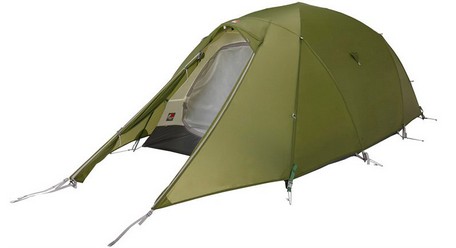
Wild camping Tents
Remember, the lighter the better for wild camping tents - so these are the smallest and most paired-back you can get. Usually, wild camping tents are low to the ground - sometimes no higher than a metre - and often will only feature one defined room - the bedroom - with the ends of the tent designed to store your gear.
Wild camping tents are designed to pack into as smaller bag as possible, and will usually have ingenious folding poles to keep the kit size tiny.
Again, go to an outdoor store and choose the design which suits your requirements and your preferences.
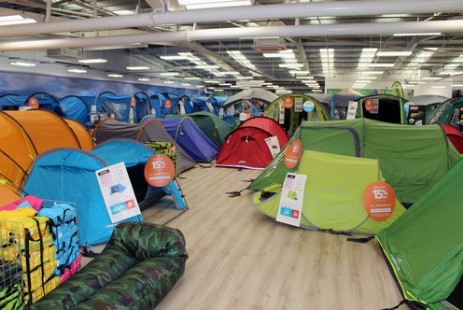
What size tent will I need?
All tents are sold on the number of people they will sleep... but the amount of space tent manufacturers allow vary, and so our advice is to always add one to your group size to allow for more space. So, if you're a couple, we'd go for a three-person tent; a family of four and we'd go for a five person tent - possibly even a six-person tent, to allow for luggage, children stuff and living space.
It's tempting to go for a really large tent, but bear in mind some campsites may charge for two pitches if your tent is larger than a certain size, and also in general, larger tents take longer to put up.
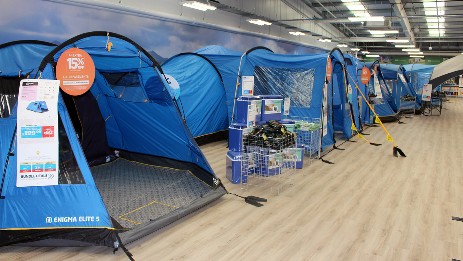
Our tip is to always try to see tents pitched before you buy, so you can see exactly whether it is right for you.
Stores like Go Outdoors often have a large tent area in store... and our own local store at Doncaster has an outdoor tent field - to really get a feel for the tents!
Another tips is to look at the Hydrostatic Head. This is the amount of water the fabric of the tent will withstand before starting to let it seap through - so the higher the figure, the better.
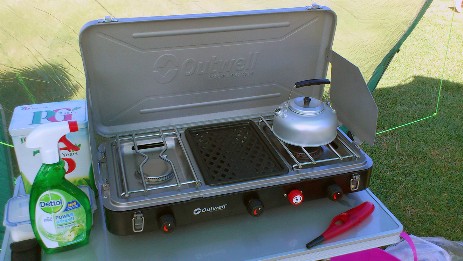
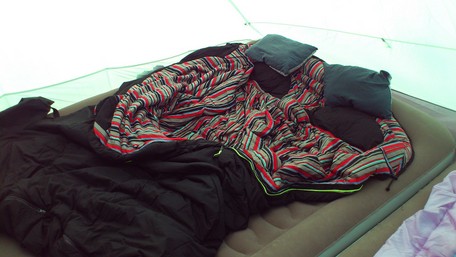
What else do I need to take camping?
Well, that's a bit like asking what do you need to go walking... some people never go on a walk without a backpack, while others rarely use one. And the same goes for camping - what one camper sees as essential, another will never use.
But, pretty much every camper will want some sort of stove - regardless of what level of camping they are doing. These can come in fairly elaborate kitchen-replacing two ring burners with grill - perfect for family camping - or ultra-lightweight folding single burners perfect for heating boil-int-the-bag food for wild-camping.
Clearly sleeping is a big part of the camping experience, so inflatable airbeds are ideal for most camping trips - and are even better if you have an electric hook-up, as you can use an electric pump to inflate them. Wild campers have options such as insultated mats, designed to keep the cold from the ground away as you sleep.
There are many folding chairs, dining tables, electric hook-ups, solar-powered lights, folding wardrobes and portable fridges to name just a few accessories available to make your camping trips more enjoyable.
Whether you want / need any - or all - of these is down to you!
Click here for our current Top 5 Camping Accessories
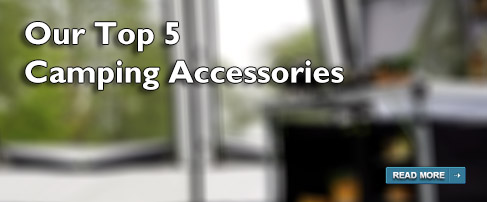
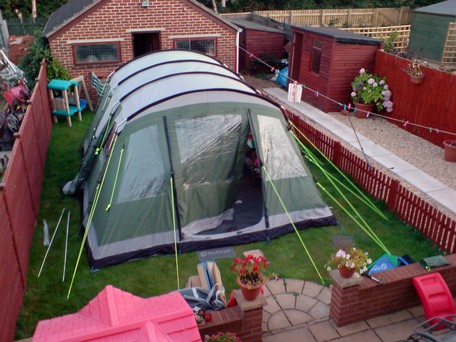
Another tip is to practice pitching your tent in your garden - if it is big enough - or, if not, in a park - to make sure you've at least tried to put it up once before going to a campsite!

